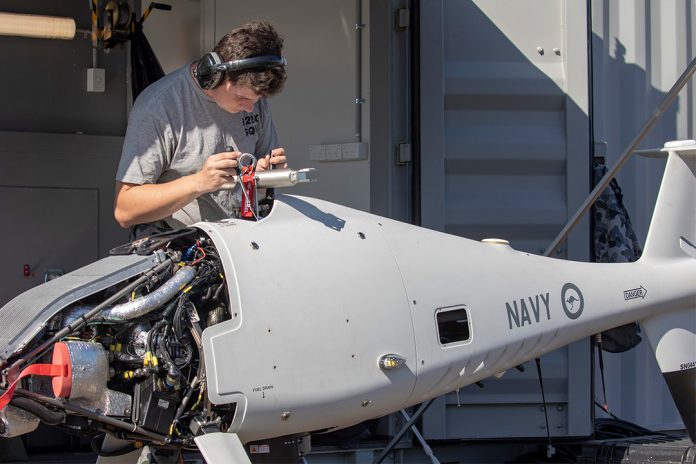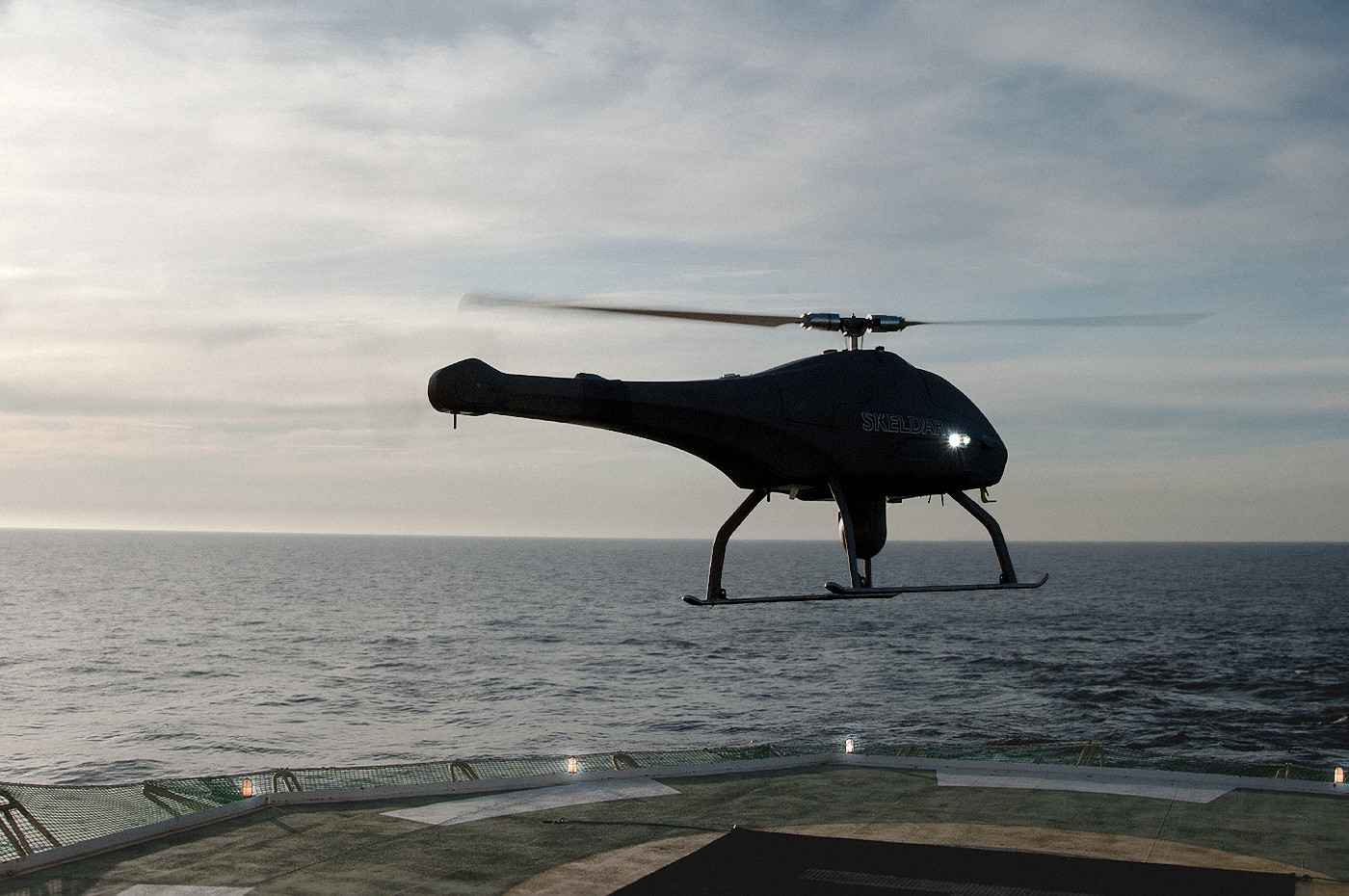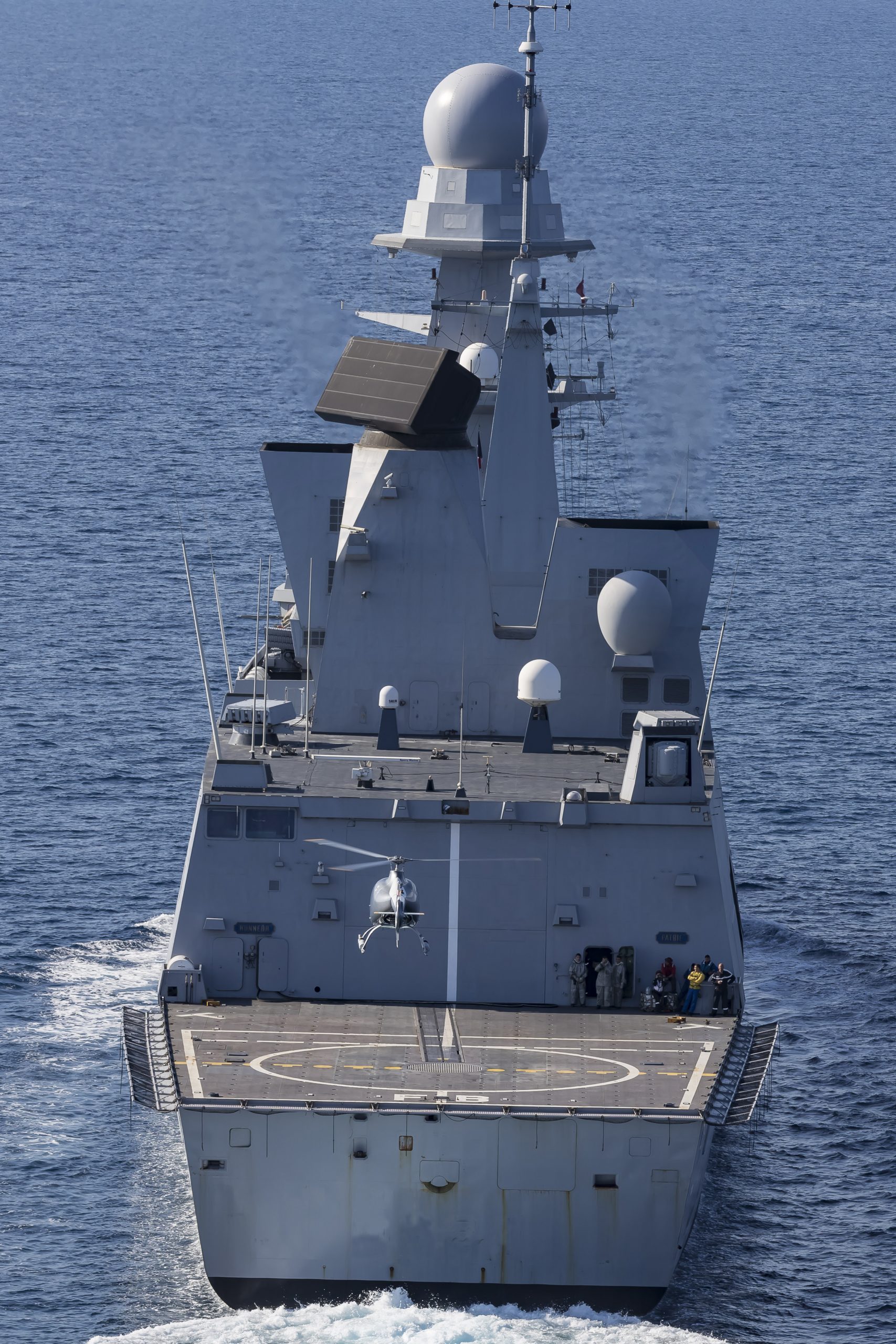
Published in the July/August 2020 Issue – A number of OEMs are at various stages of developing unmanned rotorcraft that can be used off the back of a variety of warships.
A report on the Unmanned Aerial Vehicle (UAV) Market published by MarketsandMarkets, intelligence and market research company on 29 October, 2019, concluded: “Asia Pacific is projected to be the fastest-growing market for UAVs during the forecast period (2019-2025).”
The growth is forecast across both the military and civil sectors. While there will be undeniable high civl sector growth, the report points out that it will be the military budgets from countries such as China, India and Japan that have been “increasing on a yearly basis, which has subsequently led to the adoption of military UAVs, as they assist in the collection of battlefield data.”
The report highlights the increasing development of flight control systems together with advances being made in sense and avoid that will drive the adoption of UAVs forward.
In the military, not subject to commercial regulations, there will be a significant increase in the beyond line of sight (BLOS) segment of the market due to the need for UAVs to be capable of longer ranges and greater endurance.
According to the report: “Based on mode of operation, the fully autonomous UAVs segment is projected to grow at the highest CAGR during the forecast period.”
Unmanned Naval Rotorcraft
In the Indo-Pacific, the Australian Armed Forces have been leading the way in their planning for, and adoption, of unmanned systems for both land and maritime deployment. On 25 October, 2018, the Royal Australian Navy (RAN) officially commission the 822X Squadron to conduct all its evaluations regarding UAS entering the current and future maritime fleets, as well as managing them operationally onboard ships. Currently the Squadron’s responsibilities will include the deployments of Schiebel’s sensor carrying S-100 Camcopter and the lighter long endurance Insitu ScanEagle.
Aside from the core tactical role that UAS will serve when operating with the RAN, which is delivering Intelligence, Surveillance and Reconnaissance (ISR), the UAS are likely to play an increasingly greater role in war fighting by delivering contributing capabilities into surface and amphibious warfare, anti-submarine and fire-support roles, as well as supporting interdiction operations and assisting with all round force protection.
On 9 March the Royal Australian Navy (RAN) and Schiebel completed acceptance tests of the Camcopter S-100’s new heavy fuel S2 engine. The company billed the engine as “as a next generation replacement for the current propulsion unit.” Its arrival will increase the performance of the S-100 and allow it longevity while waiting for the new naval vessels to be commissioned.
Austrian company Schiebel was awarded a contract to develop a naval VOTL UAS capability following its selection in 2017 as a result of Navy Minor Project (NMP) 1942.
The test flights were designed to demonstrate not only the endurance of the S-100 but also the “Maximum Take Off Weight (MTOW) – with multiple payloads.” These included an L3 Harris Wescam MX-10 real-time Electro-Optical/Infra-Red (EO/IR) camera, an Automatic Identification System (AIS), a L3 Harris Bandit transceiver and a Mode-S Automatic Dependent Surveillance Broadcast (ADS-B) transponder.
Schiebel stated that it developed a new proprietary S2 heavy fuel engine, which uses JP-5 (F-44) and Jet-A1 fuels, to “enable the RAN to continue to expand their test and evaluation programme, examining advanced Vertical Takeoff and Landing (VTOL) UAS capabilities ahead of the Sea 129 Phase 5 Programme.” This programme’s aim is to determine the UAS that will operate off the RAN´s new Arafura Class Offshore Patrol Vessels (OPVs), and the new Hunter-class frigates.
The UMS Skeldar is rapidly working its way into contention for any navy in the Asia-Pacific looking for a maritime VTOL capability. The UMS Skeldar, a joint venture between UMS Aero Group and Saab signed in December 2015, was a contender for the RAN contract in 2016. Since then recent successes have included the selection of the Skeldar V-200 by the German Navy announced in August 2018 and by the Canadian Navy in May 2019, with further announcements expected imminently regarding other European naval contracts.

However, in 2016 the Indonesian Ministry of Defence became the first military customer for the V-350 civil type of UAS offered by Skeldar, and was delivered together with a training package. it is more simple to certify to civilian standards.
The V-200 has already been proved as an asset in anti-piracy operations, having been used during EU Naval Force (EU NAVFOR) operations off the coast of Somalia during Operation Atalanta. This role could be similarly exercises by countries around Asia.
Airbus performed the first flight of its VSR 700 prototype UAS, albeit tethered, on 8 November last year. The test was conducted at a facility near Aix-en-Provence in the south of France. According to the company, it successfully completed a number of take-off and landing cycles, with the longest lasting around 10 minutes. The VSR700 has evolved from the light Guimbal Cabri G2 helicopter, an optionally piloted version of which Airbus first flew in 2017.
At this early stage of testing the VSR700 prototype was tethered with a 30 metre cable to comply with regulatory authority requirements. Testing will continue in 2020 towards the first free flight which will then be followed by more complex flight testing. The VSR700 has evolved from light Guimbal Cabri G2 helicopter, an optionally piloted version of which flew in 2017.
“This first flight of the VSR700 prototype is a major milestone for the programme as we make progress on the operational demonstrator for the French Navy that will perform trials in 2021 in partnership with Naval Group,” said Bruno Even, CEO at Airbus Helicopters.

Further planned testing over the next couple of years will involve parallel testing of onboard applications to validate the UAS and mission performance. MTOW is in the 500-1000 kg range. The prototype now has its own avionics and advanced flight control system. The pilot cockpit has also been replaced with a payload bay to house mission equipment.
A second demonstrator for the French Navy’s Airborne Drone System – “Système de Drone Aérien pour la Marine” (SDAM) – programme has been confirmed by the French Defence procurement agency (DGA) as part of the PlanAero. This second SDAM prototype will be aimed at identifying the equipment and specifications needed to meet the French Navy’s expected operational needs. Sea trials aboard a French Navy multi-purpose frigate (FREMM) will take place at the end of 2021.
The AWHero is Leonardo’s entry into the maritime UAS market, although the company will also offer it as a land asset. In the 200kg class, it is currently undergoing its military certification by ARMAEREO in Italy. Leonardo states that the AWHero’s Military Type Certificate from the Italian Military Authority (DAAA) “is expected in the late 2020 timeframe”.
It has already been demonstrated in the European Defence Agency (EDA) Ocean2020 exercise in the Mediterranean Sea. Operating from an Italian Navy FREMM frigate, and mounting an EO/IR turret with AIS transceiver, it successfully detected, identified and tracked the targets.
The Hero is NATO STANAG-4586 compliant and operated from a Ground Control Station (GCS) by two operators and has been designed to utilise sensors, datalink, data processing and analysis, with cyber security.
Flight testing is currently underway (after a brief stop due to the COVID-19 crisis) and will continue through 2020.
One regional development that has had a slow beginning is the Indian Naval Rotary Unmanned Aerial Vehicle (NRUV), which has been a joint development between Hindu Aeronautics (HAL) and IAI’s Malat Solutions. The initial role for the NRUV was to be as was to be as a communications and ISR maritime asset but development has been predictably slow.
The platform is an an upgraded Chetak, now called Chetan (which is a manufactured under license Alouette II) with a Turbomeca TM 333 2M2 engine. it is transformed into a rotarty UAV through IAI’s Helicopter Modification Suite (HeMoS). Available data indicates that it is likely to have a maximum endurance of six hours with a 120km range. Sensors suggested for the UAS include maritime surveillance radars and electro-optical payloads that would include signals and communications intelligence gathering (SIGINT?COMINT). One prototype has reportedly been produced although further details of testing are not known.










